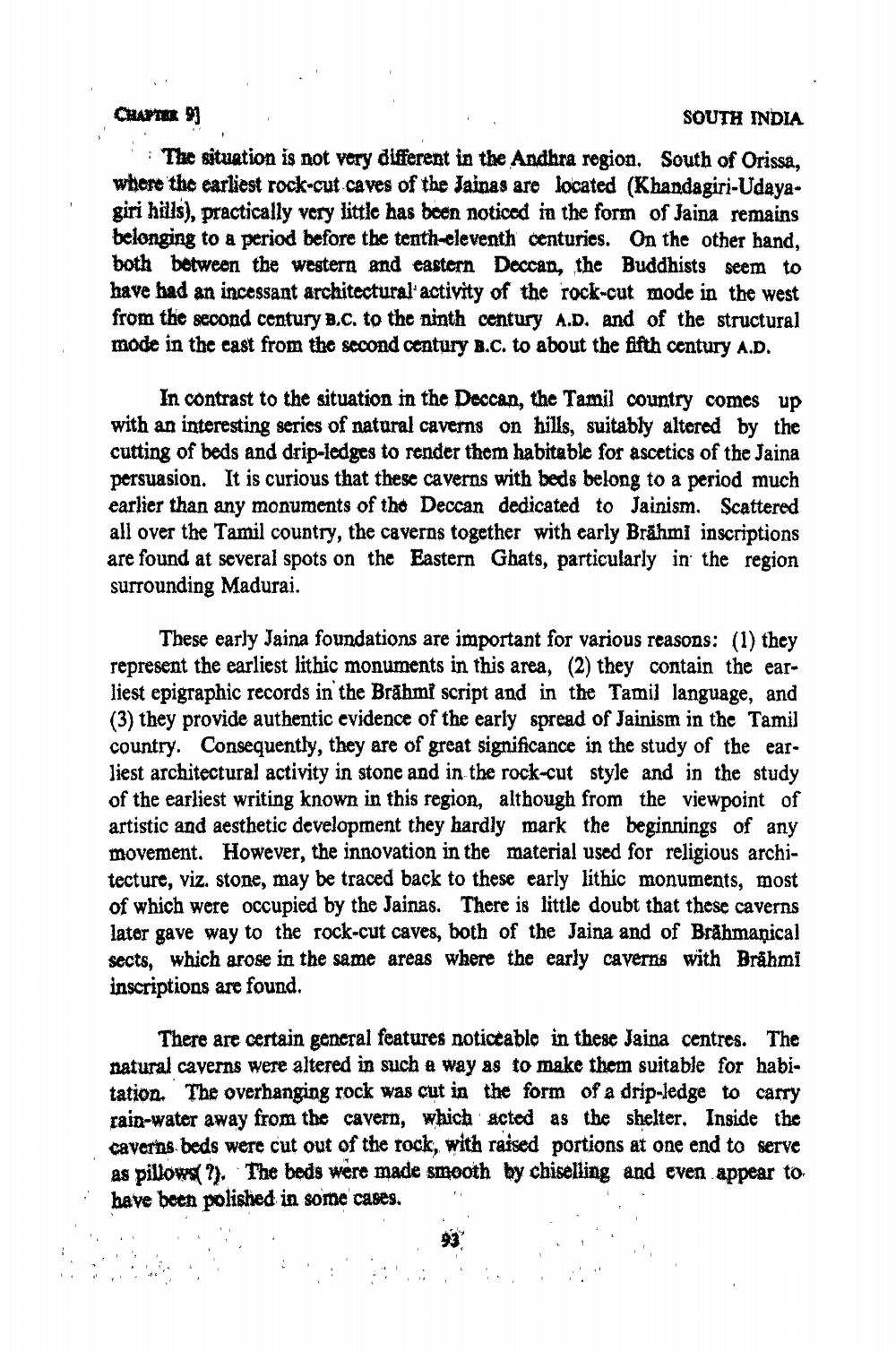________________
CHAPTER 9
SOUTH INDIA
The situation is not very different in the Andhra region. South of Orissa, where the earliest rock-cut caves of the Jainas are located (Khandagiri-Udayagiri hills), practically very little has been noticed in the form of Jaina remains belonging to a period before the tenth-eleventh centuries. On the other hand, both between the western and eastern Deccan, the Buddhists seem to have had an incessant architectural activity of the rock-cut mode in the west from the second century B.c. to the ninth century A.D. and of the structural mode in the cast from the second century B.c. to about the fifth century A.D.
In contrast to the situation in the Deccan, the Tamil country comes up with an interesting series of natural caverns on hills, suitably altered by the cutting of beds and drip-ledges to render them habitable for ascetics of the Jaina persuasion. It is curious that these caverns with beds belong to a period much earlier than any monuments of the Deccan dedicated to Jainism. Scattered all over the Tamil country, the caverns together with early Brāhmi inscriptions are found at several spots on the Eastern Ghats, particularly in the region surrounding Madurai.
These early Jaina foundations are important for various reasons: (1) they epresent the earliest lithic monuments in this area, (2) they contain the earliest epigraphic records in the Brāhmi script and in the Tamil language, and (3) they provide authentic evidence of the early spread of Jainism in the Tamil country. Consequently, they are of great significance in the study of the earliest architectural activity in stone and in the rock-cut style and in the study of the earliest writing known in this region, although from the viewpoint of artistic and aesthetic development they hardly mark the beginnings of any movement. However, the innovation in the material used for religious architecture, viz. stone, may be traced back to these early lithic monuments, most of which were occupied by the Jainas. There is little doubt that these caverns later gave way to the rock-cut caves, both of the Jaina and of Brahmanical sects, which arose in the same areas where the early caverns with Brahmi inscriptions are found.
There are certain general features noticeable in these Jaina centres. The natural caverns were altered in such a way as to make them suitable for habitation. The overhanging rock was cut in the form of a drip-ledge to carry rain-water away from the cavern, which acted as the shelter. Inside the caverns beds were cut out of the rock, with raised portions at one end to serve as pillow?). The beds were made smooth by chiselling and even appear to have been polished in some cases.




